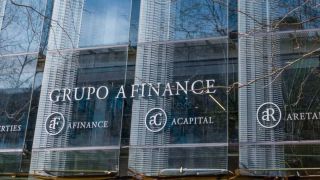
The sustained recovery of the real estate sector.
The data on housing resulting from the registration statistics and, above all, the evolution of these in 2016, show a positive trend that we can evaluate, to understand it, through the various fundamental variables of the real estate market (prices and Number of transactions) and the mortgage market (the financing that allows the previous one to function).
The housing data resulting from the registry statistics show a positive bottom line
The data on housing resulting from the registration statistics and, above all, the evolution of these in 2016, show a positive trend that we can evaluate, to understand it, through the various fundamental variables of the real estate market (prices and Number of transactions) and the mortgage market (the financing that allows the previous one to function).
From the point of view of the real estate market, first, we must look at prices. The Case & Shiller index applied to Spain, which is used by the Association of Registrars, shows that prices have been growing steadily for two years, at around 5% -6% per annum, clearly above the inflation forecast in Spain and Europe.
However, it must be taken into account that it is based on very pronounced previous falls and above 30%, so that a recovery at this rate could be prolonged, depending on the evolution of the other variables that we must consider.
The previous conclusion must be related to the number of transactions and in this sense, 2016 has been the first exercise since 2010 that closes with more than 400,000 annual sales, with an increase of close to 14%. In this chapter it is also worth mentioning the foreign demand, which remains strong, above 13%, despite the percentage decline in purchases of British citizens, through Brexit, which are being replaced by the increase mainly of French and German, As well as other nationalities traditionally interested in Spanish housing for holiday use. Therefore, housing sales had a vigorous growth, although we must also qualify that it was based on falls of more than 60% over the historical highs of 2006.
In summary from the market point of view, things are seemingly going well, although it is necessary to remember that in the total volume of sales and purchases, a large number of investor operations and a stock demand are still included, Conditions were favorable.
They are two circumstances that are evidenced by the relationship between purchases and mortgages. Although the data is not yet closed, in 2016 were registered around 280,000 mortgages for housing, that is, 30% of operations were made without bank financing. Along with these data, we can see that there are upward tensions in the price of land that affect the final price of the house and it is known that low wages, if the trend does not change, cause serious difficulties for the formation of new homes, a key factor Last for a healthy housing market, causing the collateral effect of rising rents.
The mortgage market also shows eloquent figures, with a medium-capped mortgage loan, which rose 2% in 2016. At the same time, interest rates have remained low, although with a new element, the increase in fixed-rate mortgages, Already present in more than 30% of the new mortgages, which, although the average rate may be slightly more expensive, also constitutes a factor of stability in the event of crises.
All of this is compounded by the decrease in the effort required to access the property, as the average monthly mortgage rate fell by 2.7% and accounts for around 27.5% of the average salary. Recommended limit of not dedicating to the payment of the housing more than a third of the family income.
The last point of analysis on the functioning of the mortgage market is the evolution of defaults.
Behind each case there is a family history of effort and suffering, and the figures can not be underestimated, but the good news is that in 2016 certifications to start foreclosures fell by about 34%, a percentage similar to the decline in dations In payment
All of this leads us to conclude that the evolution of both the real estate and mortgage markets seems to be on the path of a moderate recovery, but far from the exaggerated growth of the previous expansionary cycle, which later produced a delicate crisis situation. All known, which has not yet finished our real estate sector.
- Featured news
-
Consigue tu hipoteca ideal con ayuda experta y mejores condicionesAugust 11th 2025
-
 Incorporamos a Carlos Martín como nuevo Director de nuestra oficina de Barcelona en aFinanceSeptember 19th 2024
Incorporamos a Carlos Martín como nuevo Director de nuestra oficina de Barcelona en aFinanceSeptember 19th 2024 -
 Las finanzas bajo el foco con nuestro Director NacionalSeptember 12th 2024
Las finanzas bajo el foco con nuestro Director NacionalSeptember 12th 2024 -
 En aFinance participamos en el Evento ‘Comunicación Eficaz’ en Roca Barcelona GalleryMay 25th 2024
En aFinance participamos en el Evento ‘Comunicación Eficaz’ en Roca Barcelona GalleryMay 25th 2024 -
 En aFinance, nos complace anunciar la incorporación de Patricia Marqués como Coach EjecutivaMay 23rd 2024
En aFinance, nos complace anunciar la incorporación de Patricia Marqués como Coach EjecutivaMay 23rd 2024 -
 En aFinance hemos superado los 1.150 millones de euros en valor de transacciones durante 2023May 3rd 2024
En aFinance hemos superado los 1.150 millones de euros en valor de transacciones durante 2023May 3rd 2024






